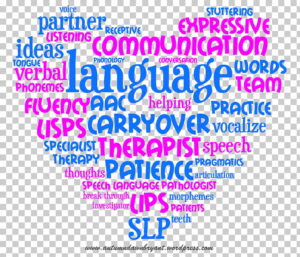The Body of a Great Sermon Creates Pictures
The Body of a Great Sermon Creates Pictures
In the last post we looked at the fact that the attention span is shorter now than it was a generation ago. Media has impacted our ability to listen, and so, as we saw, a great sermon holds attention by keeping focused. This post is an ongoing reflection on those things that will hold attention. The body of a great sermon creates pictures for those who listen.
The Power of Picture Language
 Experts in speech and communication know that picture language adds power to a talk. Here is a quote from a blog by Kim Harrison. Her speciality is PR (or Public Relations). She got to that from a job in communication management in the corporate world. She reflects on how to improve speech in the corporate world.
Experts in speech and communication know that picture language adds power to a talk. Here is a quote from a blog by Kim Harrison. Her speciality is PR (or Public Relations). She got to that from a job in communication management in the corporate world. She reflects on how to improve speech in the corporate world.
Communication has two main components: the rational and the emotional. Managers mostly communicate in rational mode – about hard data and facts. Unfortunately, as we all know, facts can be dry. And facts quoted in speeches can make the listeners fall asleep. Then what can we do to get the message across better? We can use imagery in presentations and speeches for a stronger impact.
Think about the last sermon you listened to. Did the preacher use mostly facts, or did he/she use imagery?
There is a temptation for the preacher to use a bunch of facts that he/she has obtained in the study of a passage for a sermon, but in great sermons, the body of the sermon creates pictures that cause people to sit up and pay attention. Think about your last sermon. Facts or picture? You need both, certainly, but the preachers who connect use imagery.
Creating Pictures for a Great Sermon
So, how do you go about creating pictures for people? Here are some suggestions:
Use Pictures
The easiest is to use pictures. If you have access to powerpoint or overhead, you can put a picture up that people will look at as you talk.
Use Metaphors
Here is another quote from Kim Harrison’s blog:
A metaphor is a symbol or image applied to an object or action to which it is imaginatively but not literally applicable. Metaphors occur frequently in every language and are used to conceptualize one mental domain in terms of another. Everyday abstract concepts like time, change, causation and purpose can be expressed metaphorically. These images add great strength to the communication. For example:
- “We’re like a ship without a rudder.”
- “We’re heading for the rocks.”
- “There’ll be blood on the floor at the next committee meeting.”
- “Our competitor has been a thorn in our side.”
- “The project fell over at the first hurdle.”
- “This is an enormous roadblock to our plans.”
- “That investor jumped the gun.
- “Heavy-handed policy.”
- “Grass-roots organization.”
- “Out of the mainstream.”
A metaphor creates a mind connection for people.
Describe A Person or Situation
Use descriptive words. When telling about a storm, describe it. Let people feel the wind, the spray of the water, the heaving of a boat. When you describe a person, verbally give people a picture of the person; describe their hair, their height, their walk, etc. Use descriptive words whenever you can.
As I was writing I remember some sermons that I did around the high holidays. I used to create Biblical characters for people, complete with appropriate costumes. Picture language was vitally important for these messages. When a shepherd, I described the darkness of the night, the sound of the sheep, the fire around which we gathered. Then the burst of light of the angel giving the good news. People remember those sermons because they created a picture for people.
Use Object Lessons
Another great way to create pictures is to actually use objects. I heard a friend of mine preach about God throwing us a lifeline when we are in trouble or tempted. He got a life ring on a rope and threw it out toward the audience, and then he descried the need to grab on, or it would flow past, and the opportunity would be gone.
a lifeline when we are in trouble or tempted. He got a life ring on a rope and threw it out toward the audience, and then he descried the need to grab on, or it would flow past, and the opportunity would be gone.
One of the best sermons I ever heard was by another friend. He used a cheap pot that he smashed as he talked about Jesus’ body being destroyed for us.
Stories create pictures for great sermons
I’ve mentioned stories in various posts in this blog over the years. Stories grab peoples’ attention because they create pictures. Jesus used stories often to make his point., and you should, too.
Images can make a good sermon great. One final quote from Kim Harrison.
Research confirms that image-based words are stronger than concept-based words. A study of the comparative charisma and greatness of all the US Presidents concluded that the metaphorical images they used helped to distinguish the great Presidents from the average (assuming their achievements were solid). This line of research provides one of the few opportunities to compare the attributes of various leaders over time.
The table below, based on the research, shows strong image-based words compared with concept-based words. Image-based words more easily arouse a sensory image in people’s minds, thereby engaging the readers or listeners more fully. A speaker talking of their “heavy heart” has more impact than a person with “sad news.” Examples of image-based words compared with concept-based words are listed below with the image-based words shown first and the concept-based words shown second.

Sweat / work
Hand / help
Root / source
Heart / commitment
Explore / inquire
Rock / dependable
Grow / produce
Journey / endeavor
Frontier / limit
Path / alternative
Clamor / request
Sweet / agreeable
Tranquil/ moderate
Dream / idea
Imagine / think
Listen / consider
See / understand
The body of a great sermon creates pictures for people to connect. Use them well.



